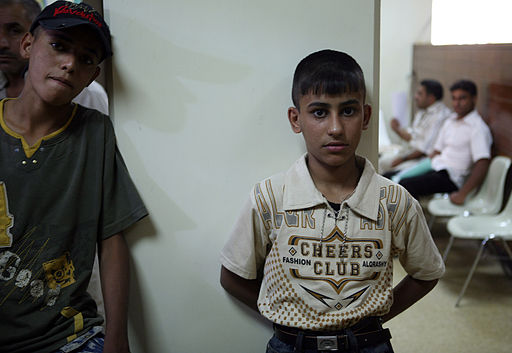Main Content
Lesson 1: Introduction to Normal and Abnormal Behavior in Children and Adolescents
A Current Picture of Mental Health Problems
 Public Domain, commons.wikimedia.org
Public Domain, commons.wikimedia.org
Surveys conducted in the United States find that approximately one in eight children have a mental health problem that has a significant impact on their daily functioning (Costello, Egger, & Angold, 2005). Perhaps even more alarming is the fact that fewer than 10% of these children are receiving proper services to address these problems (Costello et al., 2005). A large part of the explanation for this lack of intervention is related to a lack of understanding of psychological problems and limited access to resources. Another issue involves the fact that these problems are coinciding with ongoing developmental changes. It is sometimes difficult for adults to determine which problems require professional attention and which are a part of the normal course of development. Making this determination requires a strong understanding of child development – being able to distinguish normal characteristics and behaviors from those that are abnormal.
In addition to general statistics about the prevalence of mental health problems among children and adolescents, recent research has highlighted characteristics that place certain groups of children at increased risk for developing mental health problems and some key factors that influence rates and expression of these disorders. We know, for example, that children from disadvantaged families, who receive inadequate child care, or are born to parents with mental illness or substance abuse problems are more likely to experience mental health problems (Davis, Glynn, Waffarn, & Sandman, 2011; Mellin, 2010; Pollak et al., 2010; Razza, Martin, & Brooks-Gunn, 2010). We also know that factors, such as a child’s sex and cultural background, influence the expression and recognition of psychological disorders. For example, cultural beliefs are likely to influence the meaning given to certain behaviors as well as the response to them. It is important to recognize and consider the potential influence of these factors.
Approximately 20% of children who experience serious and chronic psychological problems will continue to face significant difficulties throughout their lives (Costello & Angold, 2006). These problems are most severe if these problems are unrecognized and untreated for extended periods of time.
